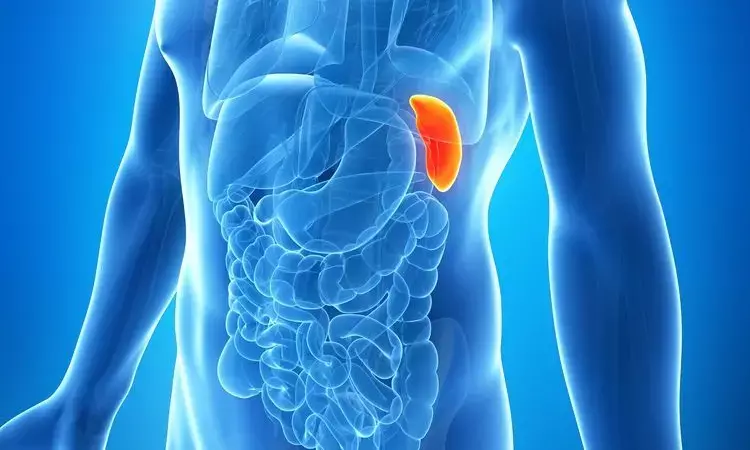- Home
- Medical news & Guidelines
- Anesthesiology
- Cardiology and CTVS
- Critical Care
- Dentistry
- Dermatology
- Diabetes and Endocrinology
- ENT
- Gastroenterology
- Medicine
- Nephrology
- Neurology
- Obstretics-Gynaecology
- Oncology
- Ophthalmology
- Orthopaedics
- Pediatrics-Neonatology
- Psychiatry
- Pulmonology
- Radiology
- Surgery
- Urology
- Laboratory Medicine
- Diet
- Nursing
- Paramedical
- Physiotherapy
- Health news
- Fact Check
- Bone Health Fact Check
- Brain Health Fact Check
- Cancer Related Fact Check
- Child Care Fact Check
- Dental and oral health fact check
- Diabetes and metabolic health fact check
- Diet and Nutrition Fact Check
- Eye and ENT Care Fact Check
- Fitness fact check
- Gut health fact check
- Heart health fact check
- Kidney health fact check
- Medical education fact check
- Men's health fact check
- Respiratory fact check
- Skin and hair care fact check
- Vaccine and Immunization fact check
- Women's health fact check
- AYUSH
- State News
- Andaman and Nicobar Islands
- Andhra Pradesh
- Arunachal Pradesh
- Assam
- Bihar
- Chandigarh
- Chattisgarh
- Dadra and Nagar Haveli
- Daman and Diu
- Delhi
- Goa
- Gujarat
- Haryana
- Himachal Pradesh
- Jammu & Kashmir
- Jharkhand
- Karnataka
- Kerala
- Ladakh
- Lakshadweep
- Madhya Pradesh
- Maharashtra
- Manipur
- Meghalaya
- Mizoram
- Nagaland
- Odisha
- Puducherry
- Punjab
- Rajasthan
- Sikkim
- Tamil Nadu
- Telangana
- Tripura
- Uttar Pradesh
- Uttrakhand
- West Bengal
- Medical Education
- Industry
Splenic repair bests splenectomy for lowering mortality rate in traumatic injury cases: JAMA

A new study published in the Journal of American Medical Association showed that after severe splenic damage, splenic repair was independently linked to a reduced death rate after laparotomy than splenectomy. One of the organs most often hurt in abdominal trauma instances is the spleen. After suffering a severe abdominal injury, the spleen is frequently removed via a laparotomy with minimal attempt to preserve it. Dominik Jakob and colleagues conducted this study to investigate whether splenic repair is associated with lower mortality when compared with splenectomy, as well as the relationship between surgical management (splenic repair vs. splenectomy) and outcomes in patients with traumatic splenic injuries undergoing laparotomy.
From January 2013 to December 2019, a cohort research based on the trauma registry was conducted utilizing data from the American College of Surgeons Trauma Quality Improvement Program. Adult patients receiving laparotomy following traumatic injury within 6 hours of arrival and with significant splenic damage were among the participants. The period of data analysis in 2023 was April through August. The exposure criterion was splenic repair vs splenectomy in individuals with severe traumatic splenic damage. In-hospital mortality was the main outcome. Several statistical techniques were used to compare the results including multivariable logistic regression, propensity score matching, inverse-probability weighting, and 1:1 exact matching with sequential conditional logistic regression analysis as the major analysis.
11,244 individuals having laparotomy with significant traumatic splenic damage were identified by this study. Of them, 427 patients (3.8%) had splenic repair while 10,820 patients (96.2%) had splenectomy. 23 (5.3%) of the patients who had their spleen salvaged initially needed to have one during their follow-up hospital stay. 400 patients who had their spleen preserved were matched with 400 patients who had their spleen removed. When comparing to the splenectomy group, the mortality rate was considerably reduced in the splenic repair group. The conditional regression analysis was used to confirm the link between splenic repair and decreased mortality. Also, this link was verified using inverse-probability weighting, propensity score matching, and multivariable logistic regression.
Overall, the current study found that among patients who had laparotomies for severe traumatic splenic damage, there was a negative correlation between mortality with splenic repair as opposed to splenectomy. After the first splenic repair, around 5% of patients needed a splenectomy. The results imply that in certain instances of severe splenic damage, attempts to preserve the spleen may be warranted.
Source:
Jakob, D. A., Müller, M., Kolitsas, A., Exadaktylos, A. K., & Demetriades, D. (2024). Surgical Repair vs Splenectomy in Patients With Severe Traumatic Spleen Injuries. In JAMA Network Open (Vol. 7, Issue 8, p. e2425300). American Medical Association (AMA). https://doi.org/10.1001/jamanetworkopen.2024.25300
Neuroscience Masters graduate
Jacinthlyn Sylvia, a Neuroscience Master's graduate from Chennai has worked extensively in deciphering the neurobiology of cognition and motor control in aging. She also has spread-out exposure to Neurosurgery from her Bachelor’s. She is currently involved in active Neuro-Oncology research. She is an upcoming neuroscientist with a fiery passion for writing. Her news cover at Medical Dialogues feature recent discoveries and updates from the healthcare and biomedical research fields. She can be reached at editorial@medicaldialogues.in
Dr Kamal Kant Kohli-MBBS, DTCD- a chest specialist with more than 30 years of practice and a flair for writing clinical articles, Dr Kamal Kant Kohli joined Medical Dialogues as a Chief Editor of Medical News. Besides writing articles, as an editor, he proofreads and verifies all the medical content published on Medical Dialogues including those coming from journals, studies,medical conferences,guidelines etc. Email: drkohli@medicaldialogues.in. Contact no. 011-43720751


